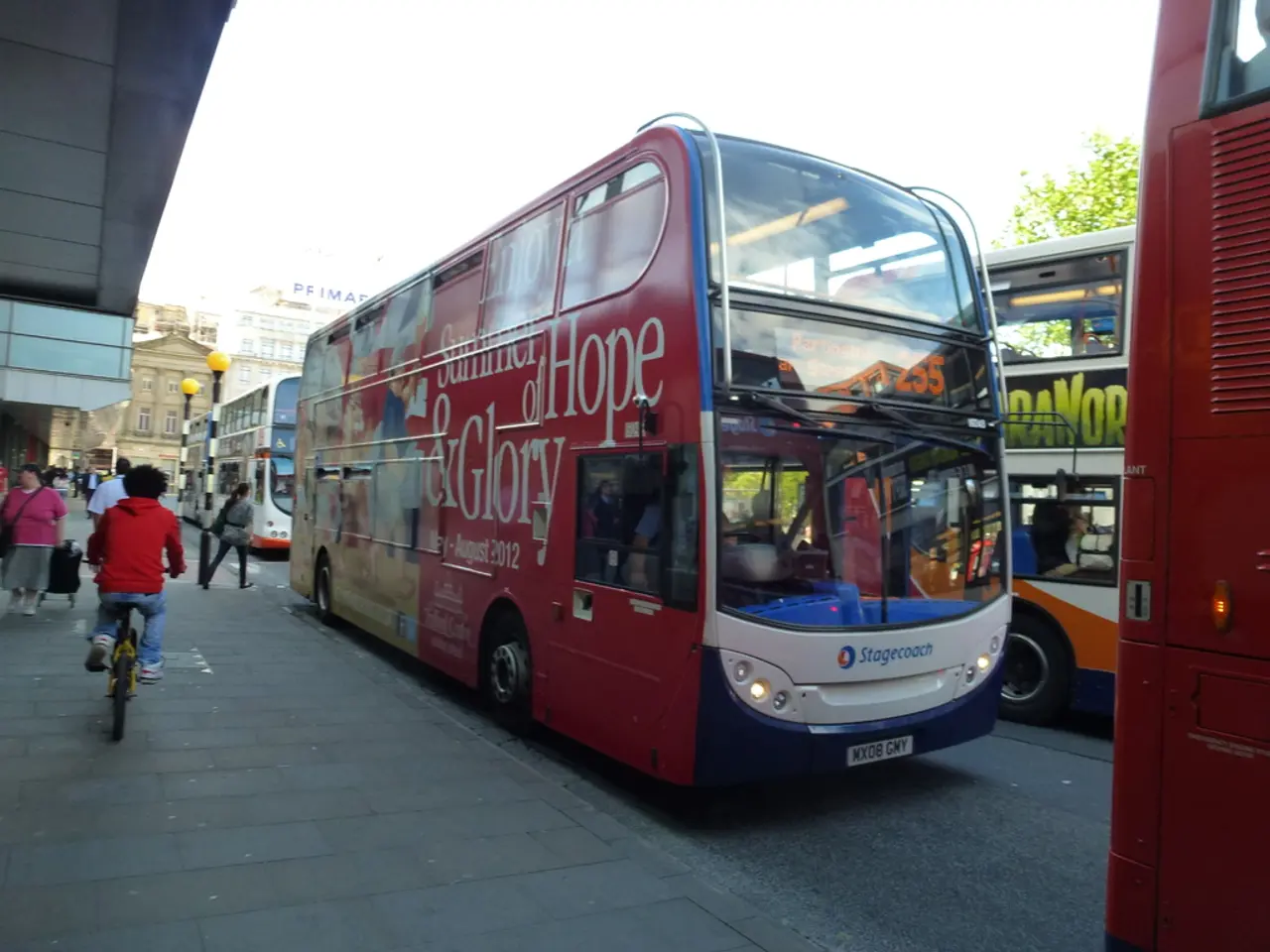Lessons Gleaned from a Quarter-Century of Prioritizing Pedestrians in Portland
Portland, Oregon, known for its commitment to walkability, has been striving to improve its pedestrian infrastructure for over two decades. The city's latest update, PedPDX, released in 2019, outlines a comprehensive plan to enhance safety, accessibility, and equity in pedestrian networks.
More than half of deadly pedestrian crashes in Portland occur on just 8% of the streets, highlighting the need for focused action. The city aims to provide a connected pedestrian network that supports walkable neighborhoods and personal health.
Data on pedestrian traffic flows is scarce in many cities compared to car and bicycle data. However, Portland's community-wide survey revealed valuable insights, with most respondents being wealthier, white, and living in privileged parts of town. This led to an effort to reach out to more vulnerable groups, ensuring that pedestrian improvements benefit everyone.
Crashes in Portland occur seasonally and at specific times of day, with most happening at intersections, particularly those that are not signalized. To address this, key priorities include completing sidewalk gaps and improving crossings to ensure continuous, safe pedestrian paths throughout the city.
The Vision Zero commitment is another priority, with the goal of eliminating pedestrian deaths and serious injuries by 2025 through comprehensive safety improvements and education. Equity-driven planning is also crucial, focusing on improving pedestrian conditions especially in historically underserved communities to address disparities in access and safety.
Data-driven decision making is at the heart of Portland's approach. Maps and tools in PedPDX track locations where sidewalks exist and where they remain incomplete, enabling targeted investments. The city's pedestrian plan relies heavily on community feedback and has an online investment map that shows real-time data on missing infrastructure and planned investments.
Long-term commitment and phased implementation are also essential. Portland emphasizes the importance of collaboration between city departments and stakeholders, embedding pedestrian safety and accessibility goals into broader transportation and land-use planning. Flexibility and update cycles are also crucial, with PedPDX being updated periodically to incorporate new insights, community feedback, and technological advances.
Portland's experience underscores that successful pedestrian planning requires sustained investment, clear vision, equity focus, and continuous evaluation through transparent metrics. The city argues for walkability investments using statistics, such as 31% of traffic fatalities involving pedestrians and pedestrian trips accounting for only 9% of citywide trips.
Portland is investing in areas with historic underinvestment to create a walkable city for all. To promote walkability in your city, frame arguments according to local politicians' agendas and goals. The city trials temporary installations to push comfort thresholds with oppositional residents, such as closing a street for a weekend or a week in summer.
Portland's pedestrian plan began in 1998, and since then, walking has become a foundational element of its transportation system. The city emphasizes the importance of communication when working on making a city more walkable, especially with partners and other city departments.
Inequities in pedestrian infrastructure and traffic safety disproportionately impact low-income communities and people of color in Portland. To address this, the city prioritizes pedestrian safety as a top concern and intentionally focuses investments on underserved neighborhoods, as low-income neighborhoods disproportionately suffer from traffic violence.
[1] For more details, visit PedPDX and the online investment map.
Read also:
- Hospital's Enhancement of Outpatient Services Alleviates Emergency Department Strain
- Increased Chikungunya infections in UK travelers prompt mosquito bite caution
- Kazakhstan's Deputy Prime Minister holds discussions on the prevailing circumstances in Almaty
- In the state, Kaiser Permanente boasts the top-ranked health insurance program







